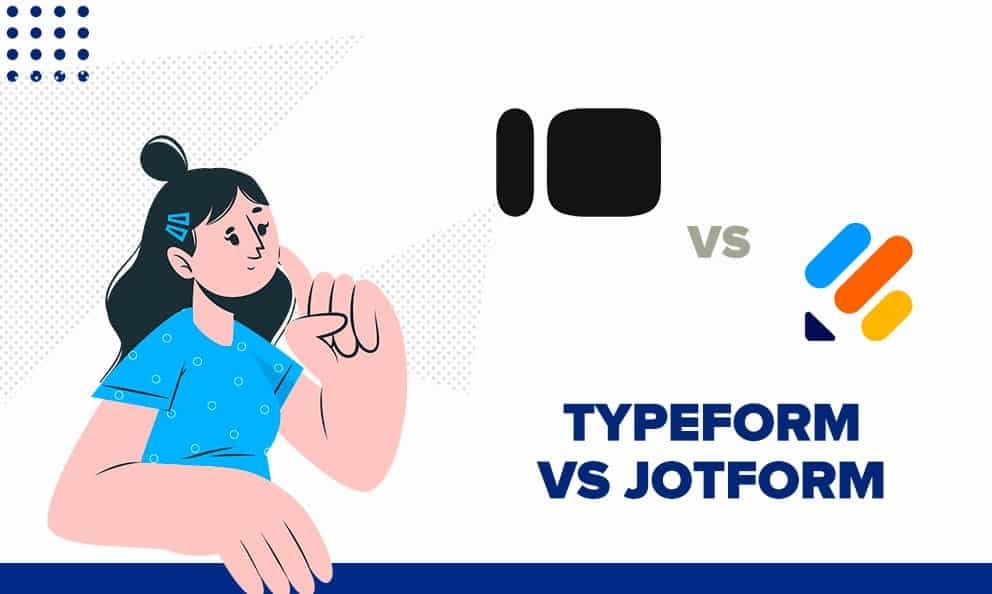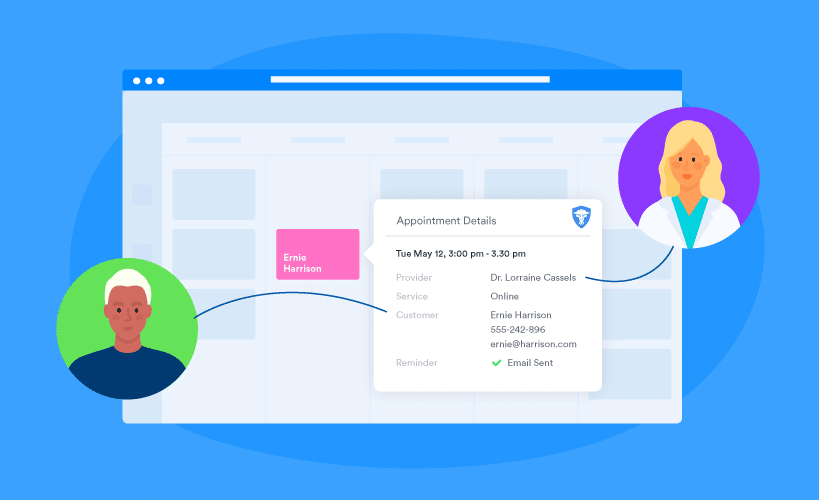Remote teams face unique challenges in staying productive. With the right tools, they can overcome these challenges.
In today’s digital age, remote work is more common than ever. Teams spread across different time zones need to stay connected and efficient. That’s where productivity apps come in. They help manage tasks, communicate effectively, and track progress. The right apps can make a big difference in how well a remote team operates.
This blog will explore the most effective productivity apps available. These tools can boost efficiency and help your team achieve more, no matter where they are working from. Stay tuned to discover the best apps for your remote team.
Communication Tools
In the realm of remote teamwork, efficient communication is key. Without the right tools, misunderstandings and delays can easily hamper productivity. Let’s dive into some of the most effective communication tools to boost efficiency in remote teams.
Instant Messaging
Instant messaging apps like Slack and Microsoft Teams are game changers. They allow team members to send quick messages without clogging up email inboxes.
Slack, for instance, offers channels for different projects. This keeps conversations organized. You can also integrate other tools like Google Drive and Trello for seamless collaboration.
Think about the time saved when you can send a quick message instead of drafting a formal email. It’s a real productivity booster.
Video Conferencing
Sometimes, text isn’t enough. Video conferencing tools like Zoom and Google Meet bridge the gap. They provide face-to-face interaction, which is crucial for remote teams.
Zoom, for example, offers breakout rooms for smaller group discussions. This feature is perfect for brainstorming sessions or team-building activities.
Google Meet integrates well with Google Calendar. You can schedule meetings with a few clicks. Imagine the ease of setting up a meeting without endless email threads.
What communication challenges have you faced in your remote team? Could one of these tools make a difference?

Credit: www.gartner.com
Project Management
Effective project management is crucial for remote teams. It ensures that everyone stays on the same page. The right tools help track tasks, plan milestones, and maintain productivity.
Task Tracking
Task tracking is vital for remote teams. It helps manage and monitor progress. Tools like Trello and Asana are excellent choices. They offer simple interfaces for assigning tasks. You can set deadlines and track the status of each task. This ensures accountability and keeps everyone informed. Task tracking tools also help prioritize tasks. Teams can focus on what matters most, boosting overall productivity.
Milestone Planning
Milestone planning keeps projects on track. It breaks down large projects into manageable phases. Tools such as Monday.com and ClickUp are useful here. They allow you to set and track milestones. This helps teams see the bigger picture. Milestone planning also aids in setting clear objectives. It ensures that everyone knows the end goals. This clarity enhances team alignment and efficiency. Milestones offer a sense of achievement as teams complete each phase.
Time Management
Time management is crucial for remote teams. It ensures tasks are completed on time. Effective time management enhances productivity and reduces stress. With the right tools, remote teams can manage their time efficiently.
Scheduling
Scheduling apps help teams plan their workdays. These apps allow easy creation of to-do lists and setting deadlines. Team members can see their tasks for the day and prioritize them. Scheduling tools also enable easy coordination of meetings. They reduce the chances of double-booking and missed appointments. Some popular scheduling apps include Google Calendar, Todoist, and Asana.
Time Tracking
Time tracking apps monitor how much time is spent on tasks. They help identify time-wasting activities and areas for improvement. With these apps, team members can log their work hours accurately. Managers can view reports to understand how time is used. This data is valuable for improving team efficiency. Some effective time tracking tools are Toggl, Clockify, and Harvest.

Credit: www.microsoft.com
File Sharing
In the world of remote work, file sharing plays a crucial role. Efficient file sharing ensures seamless collaboration and smooth workflow. The right tools can make a significant difference in productivity. Let’s explore some effective file-sharing tools that can boost your remote team’s efficiency.
Cloud Storage
Cloud storage services provide a reliable way to store and share files. They offer easy access to documents from any device, anywhere. Services like Google Drive, Dropbox, and OneDrive are popular choices. These platforms offer secure storage and robust sharing options. Files can be shared with a link or through direct access. This flexibility makes it easy for team members to access the needed files.
Document Collaboration
Document collaboration tools enable multiple users to work on the same document simultaneously. Google Docs is a popular choice for this purpose. It allows real-time editing and commenting. This feature ensures everyone stays on the same page. Microsoft Office 365 also offers similar collaborative features. These tools help teams work together without confusion. They can see changes in real time and communicate within the document.
Productivity Analytics
Productivity Analytics can be a game-changer for remote teams. It offers valuable insights into how time is spent and tasks are performed. By tracking key metrics, teams can identify areas for improvement and boost efficiency.
Performance Metrics
Performance metrics are crucial for understanding how well your team is doing. They provide quantifiable data on task completion rates, project timelines, and individual contributions. You can use these metrics to set clear goals and expectations.
Imagine knowing exactly how long it takes to complete a specific task. This knowledge helps in better planning and resource allocation. It also highlights areas where additional training might be needed.
Activity Reports
Activity reports give a detailed breakdown of what each team member is working on. This can include time spent on tasks, progress updates, and any obstacles faced. Such reports are invaluable for monitoring productivity and ensuring accountability.
Generating these reports regularly can help you spot inefficiencies. For instance, if someone is spending too much time on a simple task, you can intervene and offer assistance.
Are you making the most of your team’s potential? By leveraging productivity analytics, you can answer this question with confidence. These tools don’t just track performance; they offer a roadmap for continuous improvement. So, why not give them a try and see the difference they can make in your remote team’s efficiency?
Team Collaboration
Remote teams can boost efficiency with the most effective productivity apps. These tools enhance team collaboration, streamline tasks, and improve communication.
Effective team collaboration is essential for remote teams. It ensures smooth communication and project management. With the right productivity apps, remote teams can work together seamlessly. These tools can transform how teams share ideas and complete tasks.Virtual Workspaces
Virtual workspaces allow remote teams to stay connected. They provide a central hub for all team activities. Apps like Slack and Microsoft Teams are popular choices. These platforms offer chat, file sharing, and video calls. They help teams discuss and share updates in real-time. This keeps everyone on the same page, reducing misunderstandings.Brainstorming Tools
Brainstorming tools can boost creativity in remote teams. They allow team members to share ideas freely. Tools like Miro and MindMeister are great for this purpose. They offer virtual whiteboards and mind maps. These tools make it easy to visualize ideas and concepts. Teams can collaborate in real-time, even from different locations. This encourages more innovative solutions. “`Automation Tools
Automation tools have become indispensable for remote teams aiming to boost efficiency. By taking over repetitive tasks, these tools free up time for more important work. Let’s explore how you can leverage automation for your remote team.
Workflow Automation
Workflow automation tools streamline your team’s processes. Imagine you no longer need to manually move tasks between stages. Tools like Zapier and Integromat can help with that.
With Zapier, you can set up “Zaps” that connect different apps you use. For instance, when a new task is created in Trello, you can automatically create a corresponding task in Asana. This keeps everyone on the same page without redundant efforts.
Integromat works similarly but offers more complex scenarios. You can automate multi-step workflows involving several apps. This makes it easier to manage intricate processes without missing a beat.
Task Automation
Task automation focuses on individual tasks that you do repeatedly. Think about setting up your calendar or sending follow-up emails. Apps like Todoist and IFTTT make these tasks a breeze.
Todoist helps you automate task creation based on specific triggers. If you receive an email from a client, Todoist can automatically create a task to reply. This ensures nothing falls through the cracks.
IFTTT, short for “If This Then That,” allows you to create “applets” that automate simple tasks. For example, you can set up an applet to save every email attachment you receive to a specific folder in Google Drive. This saves you the hassle of doing it manually every time.
How much time could you save if you automated even half of your daily tasks? The answer might surprise you. Automation tools not only boost productivity but also reduce the mental load, making your workday smoother.

Credit: www.facebook.com
Security Solutions
In today’s remote work environment, ensuring the security of your team’s data is more crucial than ever. Productivity apps are excellent tools, but without solid security solutions, they can put sensitive information at risk. This section will focus on two main aspects: Data Encryption and Access Control.
Data Encryption
Think of data encryption as a lock and key for your information. It transforms data into an unreadable format, ensuring only authorized users can access it. Apps like Slack and Zoom use strong encryption to protect your messages and video calls.
Have you ever worried about sharing sensitive documents over email? Productivity apps like Google Workspace employ end-to-end encryption, meaning only the sender and receiver can read the data. This adds a significant layer of security, giving you peace of mind.
Access Control
Access control determines who can view or use resources in your app. Imagine having a safe with multiple keys, each given to different people based on their role. This is how access control works in productivity apps.
For example, in Trello, you can set permissions for each team member. Some can only view boards, while others can edit and manage tasks. This prevents unauthorized changes and keeps your workflow smooth.
Ever been frustrated by a team member accidentally deleting important files? Access control can prevent such mishaps. Tools like Microsoft Teams allow you to define user roles and permissions, ensuring only the right people can make changes.
Do you use productivity apps with strong security features? If not, it might be time to consider making the switch. Your data’s safety and your team’s efficiency depend on it.
Frequently Asked Questions
What Is The #1 Productivity App?
The #1 productivity app is Todoist. It helps users manage tasks, set deadlines, and stay organized efficiently.
Is Chatgpt A Productivity Tool?
Yes, ChatGPT is a productivity tool. It helps with tasks like writing, brainstorming, and answering questions efficiently.
What Is Your Favorite Tool To Use For Team Productivity?
My favorite tool for team productivity is Trello. It organizes tasks visually, boosts collaboration, and simplifies project management.
What Is The Best App For Working At Home?
The best app for working at home is Slack. It offers excellent communication and collaboration tools. Other good options include Zoom for video meetings and Trello for task management.
Conclusion
Choosing the right productivity apps boosts remote team efficiency. These tools streamline workflows and improve collaboration. Each app offers unique features suited for different needs. Testing and feedback help find the best fit for your team. Embrace technology to keep your remote team engaged and productive.
Efficient tools lead to better results and happier employees. Make productivity a priority with the right apps. Happy working!





